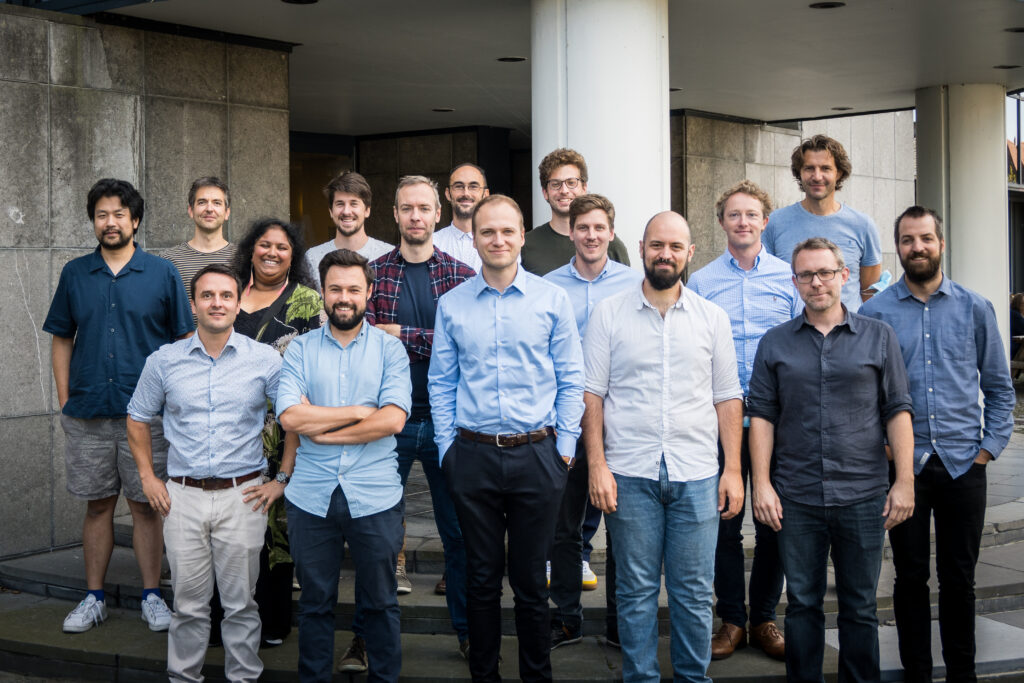It all started with the collaboration of two young physics Ph.D. students at Ghent University, Belgium, in 2006. The two students, armed with the splendid combination of business ambition and a love for science, each started their own spin-offs while still at university. In 2008 Jelle Vlassenbroeck started Inside Matters, a software company that processed data from micro-CT instruments, and in 2011 Denis Van Loo founded X-Ray Engineering (XRE), a startup that developed X-ray technology hardware and solutions. Little did they know that their friendship would turn into a partnership and their individual startups would come together and form what is now TESCAN XRE.
Two Startups Meld into One
Jelle and Denis realized that they had complementary technologies in the two companies―hardware from X-Ray Engineering, software from Inside Matters, and combined with Jelle’s and Denis’ depth of micro-CT knowledge, they decided to join forces in June 2017. The new company retained the name X-Ray Engineering (XRE), hence the name TESCAN XRE.
The partnership was less than a year old, and the founders were still defining and shaping their product portfolio and roadmap, when they were acquired by TESCAN in 2018. They came across TESCAN through one of their advisors who was already familiar with the company. They fitted well with TESCAN, not only in terms of technology synergies and customer base, but also in terms of ambition and culture. “We felt it was a good match because TESCAN itself was growing and working to expand market share, and as a startup so were we―and we felt we’d fit right in,” says Jelle.
“We started to see that the bigger players are being attracted to our micro-CT world. We knew we needed to expand our capabilities in order to stay competitive―we needed a sales and marketing team that could operate globally. We also saw an opportunity in correlative microscopy―and the value of micro-CT integrated into the wider TESCAN product portfolio,” said Denis. “Today, all universities have an SEM or a FIB-SEM. Our vision is that micro-CT will soon turn out to be a ‘must-have’ in every university as part of a complete suite of microscopy equipment and expertise.”
Why Micro-CT?
Both Jelle and Denis have backgrounds in Radiation Physics. As Ph.D. students they worked on some rather exotic areas of research, such as experiments at synchrotrons. This work got them interested in imaging and they began building their own micro-CT system. Both have a strong background in physics, and felt it was a fun prospect to build a micro-CT system that would be easier to use than the one at the synchrotron.
“With micro-CT you can really image a lot of things―from engineered materials to rocks, food, pharmaceuticals, even art―micro-CT is so versatile that it opens doors to new and interesting research applications. With our product portfolio and from working with customers, we see that literally everyone has objects or material they want to better understand and improve. Everyone wants to get involved,” says Denis.
At the university in Ghent, they worked with the Geology and Wood Sciences Departments―and eventually it became much more than a physics project and developed into something that the whole university got involved in, even attracting attention from research groups outside the university. Their reputation begn expanding and XRE became widely known as a micro-CT specialist.

First Success
In 2013, XRE installed its first commercial product―an in-line inspection system at Philips, Germany, for automotive part quality control. The system has inspected more than 20 million parts and nearly a decade later, is still in use today!
The next one was in 2014 in Barcelona for a well-known team of geologists that needed high quality results for their work. XRE developed a customized system for them, which was the first version of what became TESCAN CoreTOM.
TESCAN XRE Today
Today there are 16 employees in TESCAN XRE, with one more currently being hired. More positions will be opening soon.
TESCAN XRE is moving all of its production to Brno, but the R&D and applications teams are still in Ghent. “There’s great value in having the R&D and application teams working side-by-side so that they can collaborate in real time and R&D knows what the customer wants on a day-to-day basis,” said Jelle.
One thing that both Jelle and Denis are most proud of is that dynamic-CT, the ability to show how a material changes as a function of time in 3D. Imaging fast processes used to be limited to synchrotron facilities but with the TESCAN micro-CT portfolio, it is now possible in the lab. We hear time and time again during demos that the applications team exceeds customer expectations with what can be done with the dynamic-CT system. Even if they come into the deal late, they do a comparison with the results of competitors, and we are able to win the customer over.
“Today we have everything in house ― great technology and people―to really be excellent” says Jelle.
